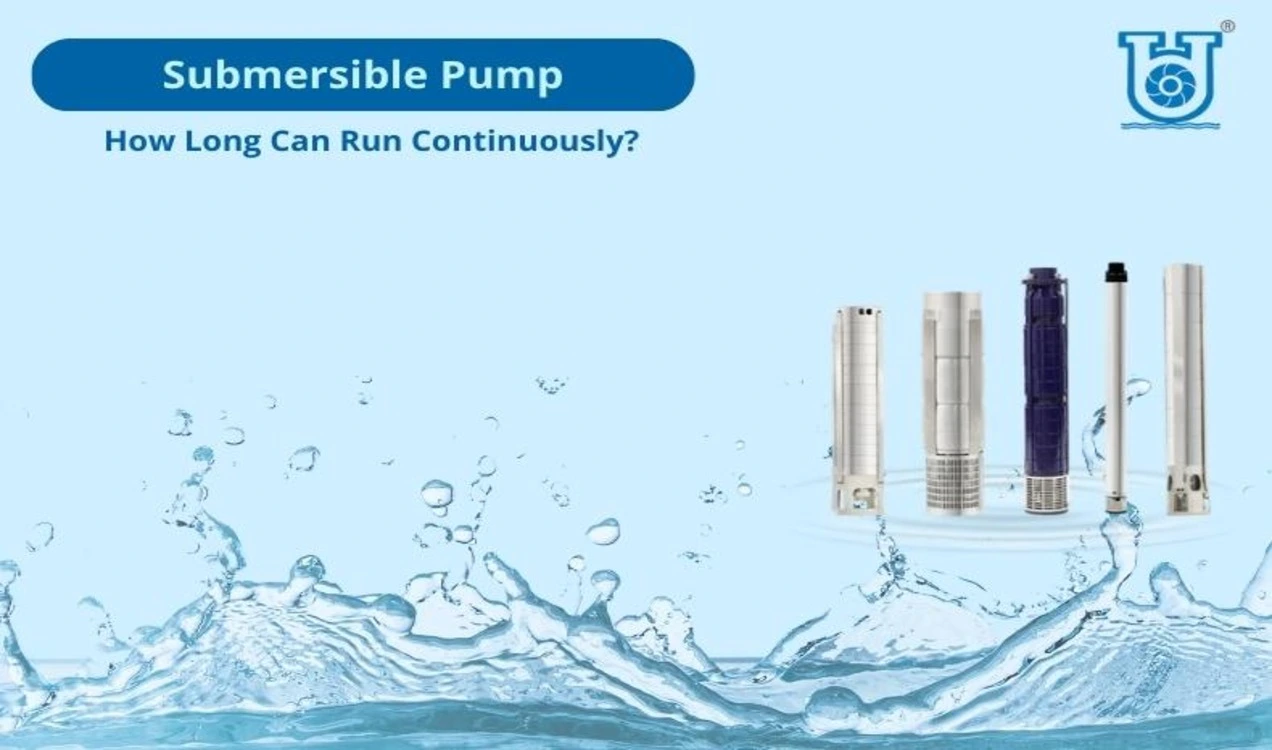If you are looking to buy a submersible pump, there will be a number of questions that pop into your mind. We will dive deep into one of those questions, “How Long Can a Submersible Pump Run Continuously?”, and try to answer your query in detail. But before that, we need to know what submersible pumps are and how they function to understand the answer we are looking for.
What are submersible pumps?
Submersible pumps are pumps that are designed to be fully submerged in water or other fluids during operation. They are commonly used for pumping water from wells, water/fluid tanks, underground and submerged sources.
Uses of submersible pumps
Submersible pumps are used for a wide variety of purposes, including
- Groundwater extraction
- Irrigation in farms
- Water pumping for firefighting
- Deep well drilling
- Water supply in residential and industrial buildings
- Sewage pumping
When a submersible pump is lowered into a hole (bore), it converts the impeller’s rotary energy into kinetic energy and lifts the water upwards. Water is pumped upwards with the impeller’s rotation through a diffuser.
Submersible pumps are easy to install, safe and efficient in moving water/fluids.
How do submersible pumps work?
Submersible pumps work by converting rotating energy into kinetic energy. This kinetic energy moves fluids like water or oil.These pumps are designed to be submerged and consist of a hermetically sealed motor, a sequence of impellers, and a pump housing.The pump motor is cooled by the fluid that is being moved.
How long can a submersible pump run continuously?
The short answer
The motor in a submersible pump is cooled by the liquid that it is moving/pumping. Therefore as long as the pump is submerged and there is enough pressure, the pump can run.
The logical answer
Since the pump is made up of mechanical parts and is running at high speeds, it will produce heat. This will result in wear and tear of moving parts. To ensure that the pump does its life cycle and beyond, it is recommended that you take precautionary measures.
To increase the lifespan of a submersible pump, it is in your best interest to run it in intervals. Checking the manufacturer’s manual or instructions can also give you a precise idea of how long can a submersible pump run continuously. It is advised to run the pump for no more than 10 hours in a single run. Give it time to cool down and then you can start the motor again. Make sure you do not start it more than the specified limit.
Also, make sure that the pump is always submerged. Running it without being submerged will create immense heat and will need to be primed. Timely maintenance is key to increasing the lifespan.
Maximum starts per hour Submersible pumps come with the specification of Maximum starts per hour. Maximum starts per hour gives you the exact number of times that you can start or stop a motor within an hour, without overheating it.
If the motor is started and stopped more than the specified number of times, it will be pushed beyond its threshold and will result in overheating. An overload relay is installed to protect the motor. If the overload relay is not available or set properly, the motor can overheat and get damaged.
Why does starting or stopping a motor cause damage?
When a motor is started, it draws more power than usual for a short time. This can be 3-10 times more than what is required for regular operation. This causes extra heat generation every time the motor is started. Stopping it does not produce heat but restarting it will again draw power and generate extra heat.
It is therefore a good practice to keep the number of starts lower than the maximum starts per hour specification on the pump/motor manual.
Unnati Pumps’ wide range of submersible pumps to suit your needs
Unnati Pumps is a renowned and reliable submersible pump manufacturer in India and a huge exporter to Gulf countries, South Africa and more. Unnati has a vivid clientele from Algeria, Libya, UAE and more. There are 3 submersible pump categories to choose from:
Stainless steel submersible pumps:
Stainless steel submersible pumps from Unnati Pumps are the highest-quality pumps that can withstand acids, solvents, seawater and other chemicals.
Maximum starts per hour: 20-30 starts per hour depending on the model.
Cast iron submersible pumps:
Cast iron submersible pumps from Unnati Pumps are durable, offer high performance and are equipped with non-return valves to prevent backflow.
Maximum starts per hour: 10-20 starts per hour depending on the model.
Noryl submersible pumps:
Noryl submersible pumps from Unnati Pumps are premium pumps at an affordable price.
Maximum starts per hour: 15-20 times per hour depending on the model.
Conclusion
Submersible pumps are used to move huge quantities of fluids from one place to another. They are engineered in such a way that they do not require any lubricant to cool the motor. The fluid being pumped works as the coolant and ensures that the motor remains cool during the entire operation. Submersible pumps are highly durable and efficient; can work for extended durations if is the need of the hour. A standard of 8-10 hours of use is ideal. But it is always good practice to run the pump in intervals to avoid any unnecessary damage and maintenance costs.


